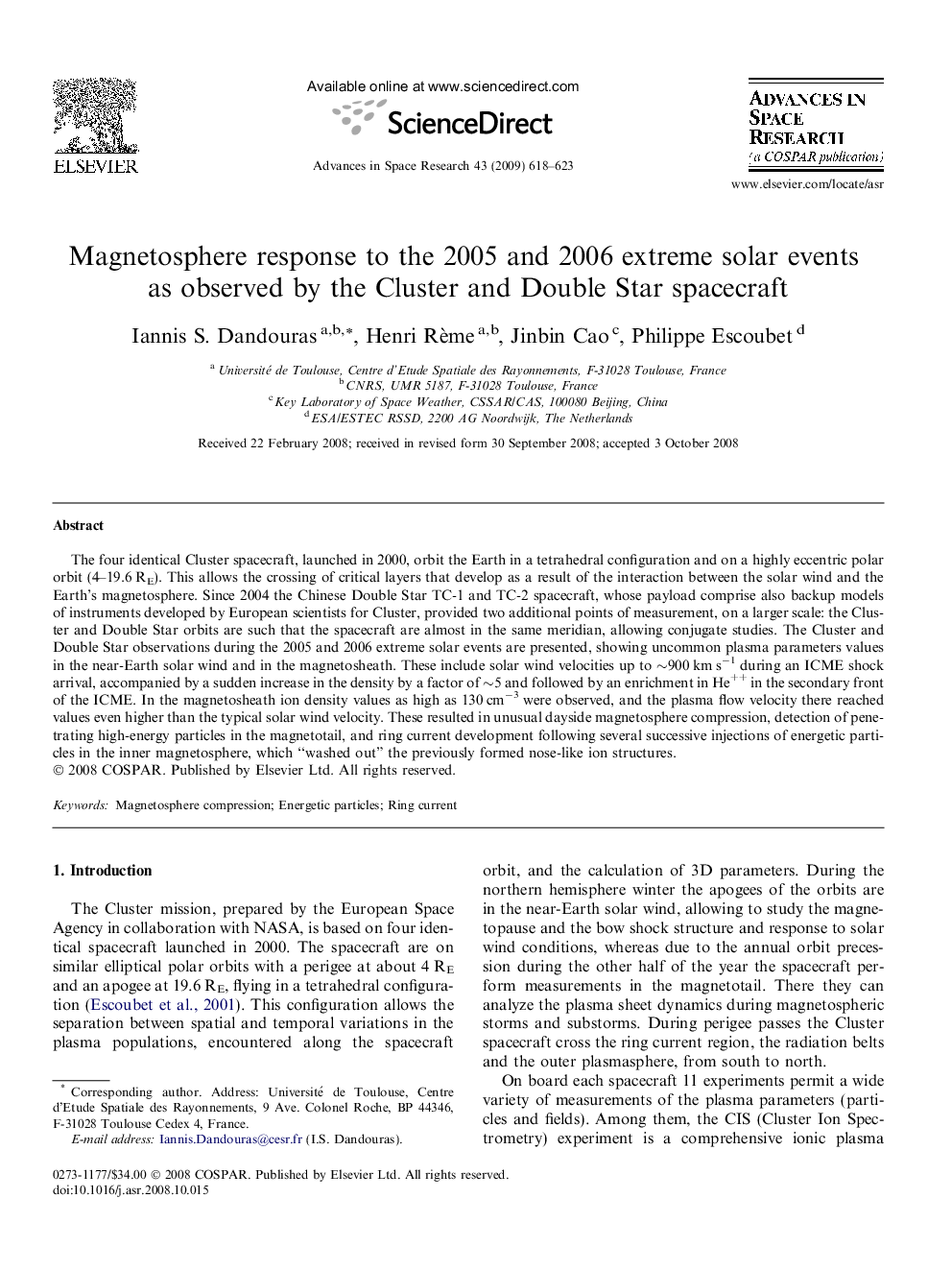| Article ID | Journal | Published Year | Pages | File Type |
|---|---|---|---|---|
| 1766436 | Advances in Space Research | 2009 | 6 Pages |
Abstract
The four identical Cluster spacecraft, launched in 2000, orbit the Earth in a tetrahedral configuration and on a highly eccentric polar orbit (4-19.6 RE). This allows the crossing of critical layers that develop as a result of the interaction between the solar wind and the Earth's magnetosphere. Since 2004 the Chinese Double Star TC-1 and TC-2 spacecraft, whose payload comprise also backup models of instruments developed by European scientists for Cluster, provided two additional points of measurement, on a larger scale: the Cluster and Double Star orbits are such that the spacecraft are almost in the same meridian, allowing conjugate studies. The Cluster and Double Star observations during the 2005 and 2006 extreme solar events are presented, showing uncommon plasma parameters values in the near-Earth solar wind and in the magnetosheath. These include solar wind velocities up to â¼900 km sâ1 during an ICME shock arrival, accompanied by a sudden increase in the density by a factor of â¼5 and followed by an enrichment in He++ in the secondary front of the ICME. In the magnetosheath ion density values as high as 130 cmâ3 were observed, and the plasma flow velocity there reached values even higher than the typical solar wind velocity. These resulted in unusual dayside magnetosphere compression, detection of penetrating high-energy particles in the magnetotail, and ring current development following several successive injections of energetic particles in the inner magnetosphere, which “washed out” the previously formed nose-like ion structures.
Keywords
Related Topics
Physical Sciences and Engineering
Earth and Planetary Sciences
Space and Planetary Science
Authors
Iannis S. Dandouras, Henri Rème, Jinbin Cao, Philippe Escoubet,
